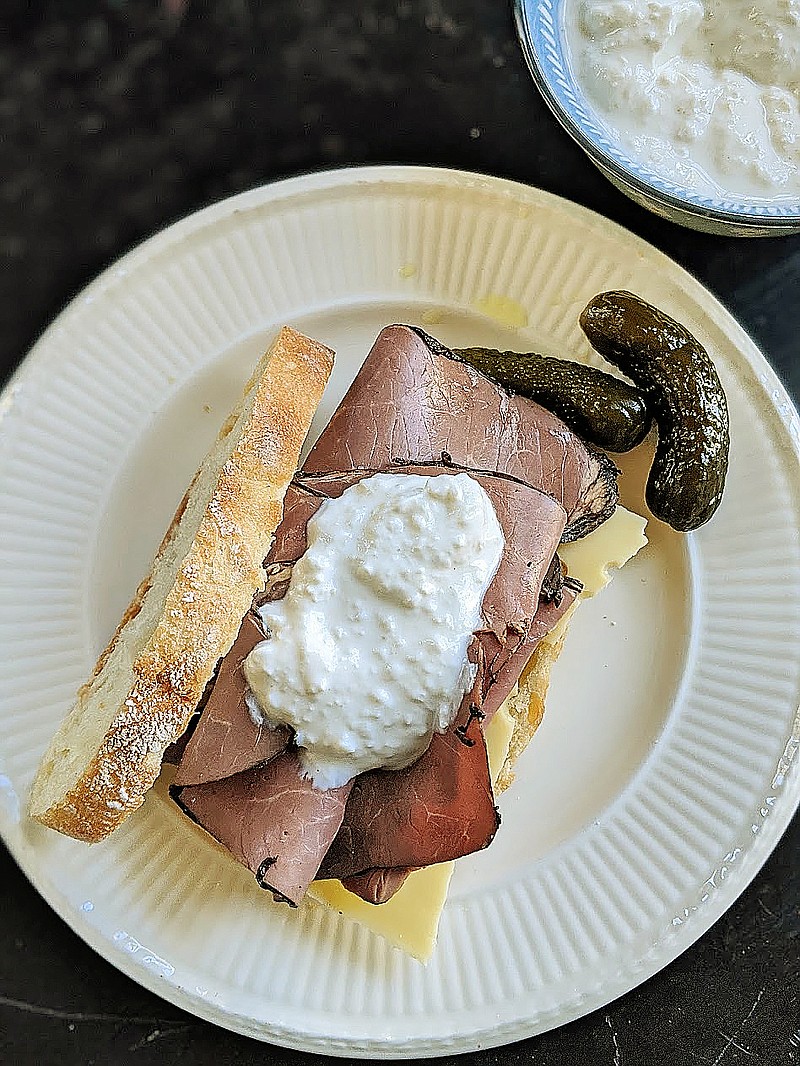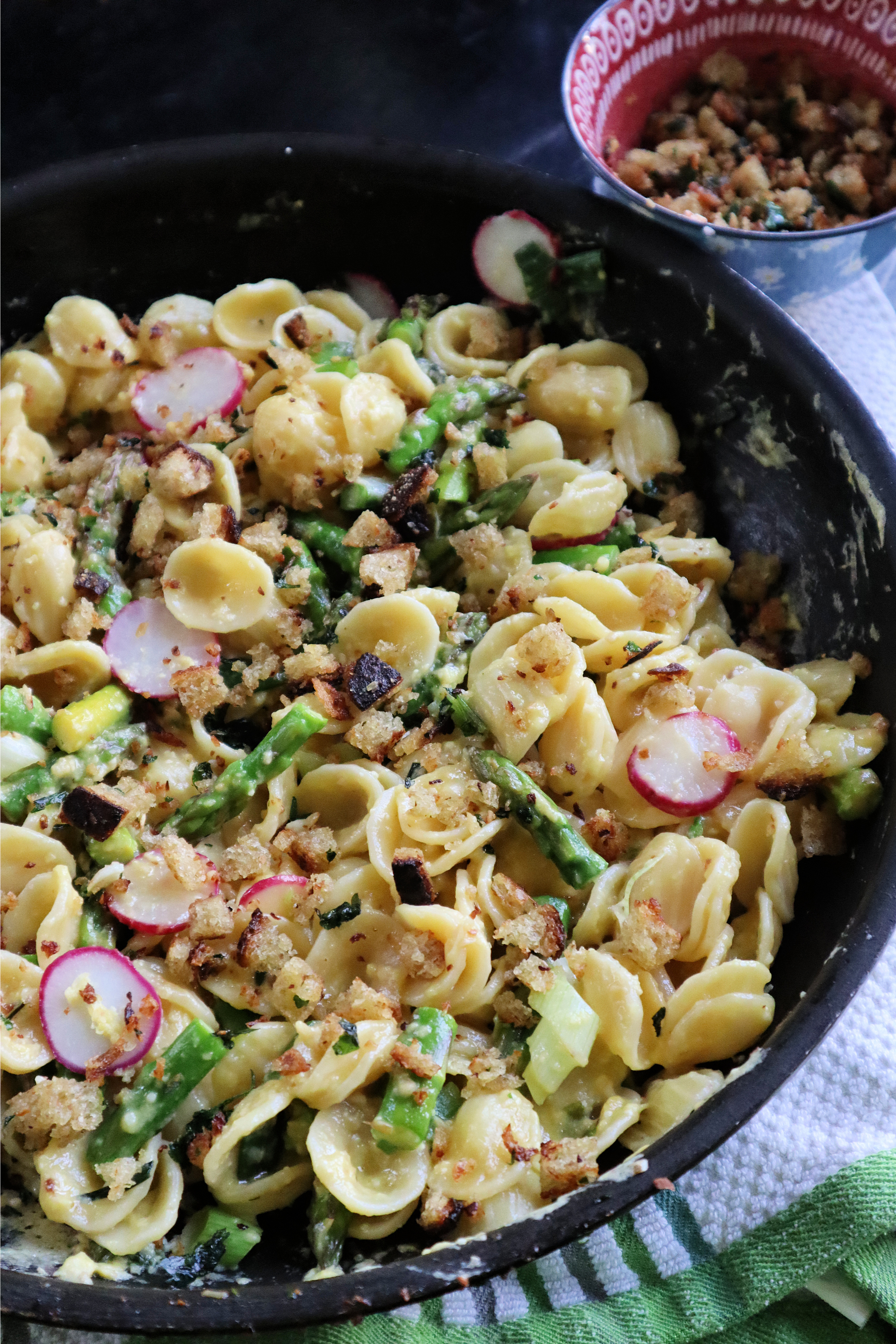PITTSBURGH - Condiments often play a role in elevating a dish's flavor. Where would a hot dog be without that ubiquitous squirt of ketchup or a ham sandwich without a slather of mayonnaise?
Then there's horseradish.
No shrinking violet, this long and knobby white root of the horseradish plant snaps the palette to attention when it finds its way into a sauce or spice blend. Hot and spicy, with a pungent odor that gives even seasoned cooks pause, it tastes like a radish on steroids.
Horseradish has a special connection to Pittsburgh. Prepared horseradish - and not ketchup - was the first product Henry J. Heinz bottled when he went into the food business back in 1869. He perfected the recipe after years of making it at home using produce from his mother's garden, along with pickles, vinegar and chili sauce, said Emily Ruby, curator at the Senator John Heinz History Center in the Strip District.
The iconic ketchup didn't come on the market until 1876, according to a Heinz company timeline. But Ruby has seen advertisements from as far back as 1872 promoting ketchup as part of its product line. "And it took a long time for ketchup to eclipse," she said; it wouldn't become the company's best seller until the 1950s and '60s.
Then, as now, horseradish was used primarily to spice up roast beef or a topping for oysters or other seafood. Heinz cleverly packaged it in clear or aqua glass so consumers - many who found the job of making it at home both tedious and thankless - could see its top quality.
Part of the cabbage family, horseradish is thought to be native to Eastern Europe. It's been cultivated for centuries for both medicinal and culinary uses. Ancient Greeks and Romans ground it into a poultice to relieve back pain and menstrual cramps. In Slavic cuisine, it's an ingredient along with sugar, ground beets and vinegar in a traditional Easter and Passover dish known as chrain.
In the United States, the commercial horseradish industry didn't take off until European immigrants started growing it in the 19th century, according to the Herb Society of America. It is cultivated primarily in the Midwest - nearly 85% of the world's supply comes from Collinsville, Illinois - but also found in Pennsylvania, Oregon, Washington, Wisconsin and California.
In all, American farmers grew nearly 3,000 acres of horseradish in 2017, according to the USDA, or an estimated 24 million pounds of the root crop.
Its name has nothing to do with horses. It's attributed instead to a mispronunciation of the German word meerettich, which translates to "sea radish" or "more radish." The English mistakenly heard it as "mare" radish.
Horseradish not only gives a Bloody Mary its fiery bite and a roast beef sandwich a bit of zing but also can be used to brighten any number of dishes. Eat it raw or prepared as a condiment with vinegar and salt, or enjoy it pickled or cooked into a savory dish. It's most biting right when it's grated. An addition of vinegar helps to stabilize the flavor and make it milder.
Stir it into coleslaw, mashed potatoes or a deviled egg filling for a kick of flavor; add it to hummus, guacamole, salad dressing or mayonnaise to awaken the tastebuds; whisk it into sauces like chimichurri to accompany meats that can stand up to a little heat; or use it to brighten a spring pasta dish.
Got a green thumb? Horseradish is easy to grow in a sunny, well-drained garden for a fall harvest. For those who don't, it's also easy to find at most grocery stores tucked among the radishes and parsnips. Choose roots that look fresh, with no blemishes, soft spots or signs of mold. It runs between $2.99 and $4.99 a pound.
To prepare horseradish, decide how much is needed. Then peel or scrape off the skin of that part as you would a carrot. The root looses much of its color and spice once grated, so you don't want to peel the whole thing if you don't need it.
Even more important: Don't get too close when you're grating horseradish, or you may tear up or feel your lungs start to burn. When the root is crushed, oils called isothiocyanates are released. The vapors trigger that head-clearing, burning sensation in the nose and sinus.
Horseradish will keep in the refrigerator for up to two weeks; it can also be frozen and grated as needed. While horseradish is a welcome addition to cooked foods, it will lose some of its punch when it is exposed to heat. So you'll want to add it to a warm dish just before serving.
However you work horseradish into your menu, feel good about eating it. Unlike some other condiments, horseradish is almost calorie-free - it counts just 2 per tablespoon - and it's naturally full of vitamins and minerals.
Plus, there's the taste. It's just the thing to wake up your taste buds.
Homemade Horseradish
This is the most common condiment made from horseradish root. Use it to spice up a Bloody Mary or vinaigrette, spoon on top of oysters or stir it into whatever else you are making for a punch of flavor.
8- to 10-inch-long piece of horseradish root
2 tablespoons water
1/8 to 1/2 cup white vinegar
Pinch salt
Rinse the horseradish root, and dry with a paper towel. Peel the surface skin with a vegetable peeler. Chop root into pieces.
Place the pieces into a food processor. Add a couple tablespoons of water, and process until well-ground.
If the mixture is too watery, strain out some of the liquid. Add 1/8 to 1/2 cup of white vinegar and a pinch of salt for every 1 cup of grated horseradish. Pulse to combine.
Transfer the grated horseradish to a jar. It will keep for up to 6 weeks in the refrigerator.
Makes 1 (8-ounce) container.
- Gretchen McKay
Horseradish Sauce
The addition of yogurt and mayonnaise temper the spiciness of the horseradish in this creamy sauce. It's great on sandwiches and baked potatoes and can be stirred into salad dressings and egg dishes.
1/2 cup plain whole-milk Greek yogurt
1/2 cup sour cream
2 to 3 tablespoons prepared horseradish
1 teaspoon Dijon mustard
1/2 teaspoon finely grated lemon zest
Salt and pepper to taste
Mix yogurt, sour cream, horseradish, mustard and lemon zest in a small bowl. Season with salt and pepper.
Makes about 1 cup.
- Gretchen McKay
Asparagus Carbonara With Horseradish Crumbs
Cooked horseradish makes spring vegetable pasta sing when it is teamed up with green onions, garlic, radish and asparagus. It's also an ingredient in the garlicky breadcrumbs that go on top. So good!
12 ounces shaped pasta, such as fusilli or orecchiette
For horseradish crumbs:
1 tablespoon butter
1 tablespoon olive oil
1 cup fresh breadcrumbs
1 clove garlic, minced
2 tablespoons freshly grated horseradish
1 tablespoon minced parsley
Sea salt
For pasta:
2 tablespoons olive oil
3 or 4 green onions, sliced thin
1 large clove garlic, minced
1 large bunch asparagus, sliced into bite-size pieces (about 2 cups)
1 heaping tablespoon freshly grated horseradish
2 to 3 radishes, thinly sliced
Sea salt and black pepper
2 large eggs
1/2 cup grated Parmesan cheese, plus more for serving
2 teaspoons Dijon mustard
Cook pasta in salted water according to package instructions. Drain, retaining 1 cup of pasta water. Return pasta to pan, but do not heat.
While pasta is cooking, make breadcrumbs. Melt butter and oil in a small pan over medium heat. Add breadcrumbs, garlic, horseradish, parsley and a pinch or two of salt. Cook until toasted, about 5 minutes. Set aside. (Can be stored in the refrigerator for up to a month.)
In a large saute pan, heat oil over medium-high heat. Add green onions, garlic, asparagus, horseradish and radish, and cook for 6 to 7 minutes, or until asparagus is tender. Season to taste with salt and pepper, and toss an additional minute.
Add cooked pasta to pan, toss to combine and turn heat to very low.
Whisk together the eggs, cheese and mustard. Pour over warm pasta and veggies, and toss continuously until the egg mixture thickens into a sauce. Add a little pasta water to thin the sauce to desired consistency.
Top with horseradish crumbs, and serve immediately.
Serves 3 to 4.
- Adapted from thewimpyvegetarian.com


